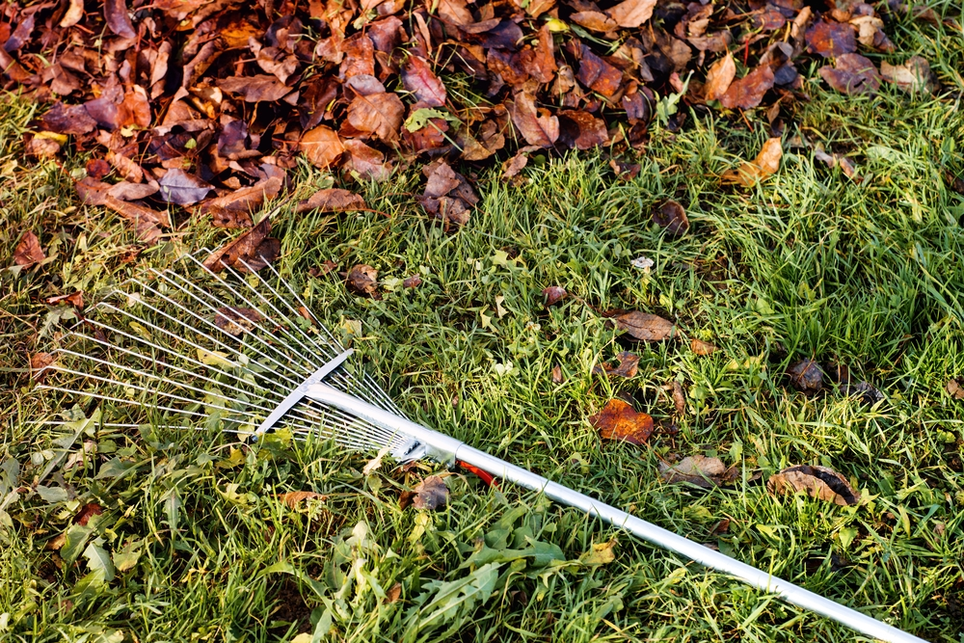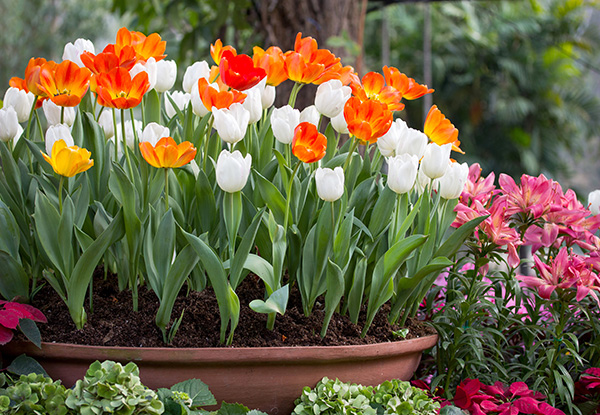
Parties, barbeques, football games – our lawns have a lot to cope with in summer! It’s not surprising that they can start to look a bit tired as autumn arrives. Fortunately, autumn is the ideal time for lawn maintenance, and with a bit of care and attention now, your lawn will look as good as ever when spring arrives, ready for another year. Follow these six simple autumn lawn care tips for a lush, healthy green lawn.
Autumn lawn care tips

-
Cut your lawn on a high setting, aiming for a length of around 5-7cm (2-2.5 in). This leaves the remaining grass to make as much use as possible of the autumn sunshine, storing energy to get through the winter.
-
Check whether your lawn needs scarifying by getting down to ground level and examining the roots. Gently pull the tufts of grass apart – if you can see the soil between the blades of grass, you don’t need to scarify. If there’s a layer of matted dead grass (thatch) around the roots, then scarify the lawn by raking firmly over it with a spring tine rake to remove moss and thatch. For large areas, you may find it easier to hire a mechanical scarifier.
-
Aerate your lawn. For small lawns, you can do this manually using a garden fork. Push the tines of the fork into the lawn as far as they can go. Lean gently on the handle so that the soil lifts very slightly, then remove the fork. Do this at regular intervals across the whole lawn. If your lawn is too large to aerate manually, use a mechanical aerator. Aerating helps to break up compacted ground, increasing the amount of oxygen in the soil and improving drainage. This enables the grass to grow strongly, out-competing weeds and moss.

-
Spread a top dressing over the lawn, using a soft broom or a rubber rake to spread it evenly and work it into the holes left after aerating the soil. Put on a little at a time – this is easier than trying to spread a big pile of top dressing, and you’re less likely to end up smothering the grass below. As well as improving drainage and soil structure, top dressing will also help to fill any small dips in the lawn, making it more level.
-
Overseed any bare patches, either by hand or using a lawn seed spreader. Sow the seed in two passes over the area, with the second pass at right angles to the first. This will ensure even coverage of the area.
-
Give your lawn an autumn feed. Unlike summer lawn fertilisers which are high in nitrogen to promote lush growth, autumn lawn fertilisers are high in potassium which helps to harden the grass, protecting it against cold winter weather.
If your lawn is in need of some TLC, come in and see our great range of lawn care products. You’ll be delighted with the results come next spring!







